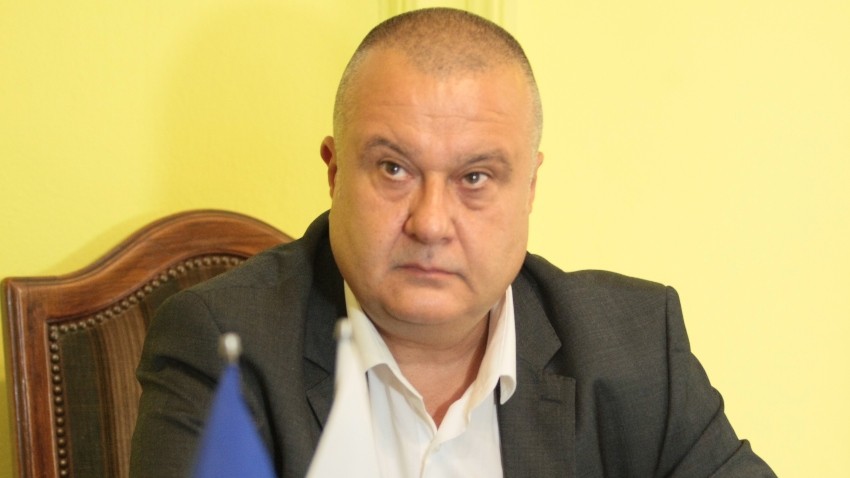It is often said that Jerusalem is the city that can raise oneclosest to God. It is no coincidence that in the ancient Aramaic language spoken by Jesus Christ, people used to say, "I am going up in Jerusalem." Built on a hill, the city creates a unique sense of elevation to the Creator. That is why the desire of people to visit the Holy City has not subsided for millennia.
The pilgrimage to the Holy Lands, known among Bulgarians as "hajjilak", has long been considered a particularly important event in a person’s life. It was a common endeavour for the more prosperous Orthodox Christians of the Balkan Peninsula during the Ottoman Empire, when the Muslim leaders would go on a pilgrimage to Mecca.
"There is evidence, albeit indirect, that as soon as Christianity was adopted, mostly monks and priests began to travel on pilgrimage to the Holy Lands," said Prof. Emanuel Mutafov, director of the Institute for the Study of Arts at the Bulgarian Academy of Sciences.

“They would spend some time in the great Orthodox monasteries in Palestine, Mount Sinai and Jerusalem. There are known copies of manuscripts in Old Bulgarian that were influenced by the centuries-old literature and culture collected in the holy sites. Our records of mass worship there date from the 18th and 19th centuries, when both the Bulgarian lands and Palestine were within the boundaries of the Ottoman Empire. Then, some Bulgarian cities, thanks to craftsmanship, began to grow affluent. Some of the men who were able to accumulate wealth by middle age (around 35-40 years old) could afford to travel to the Tomb of Jesus. The pilgrimage journey lasted about 6 months and cost quite a substantial sums - a few thousands coins of the time. In addition, there were many dangers on the way because the pilgrims used to travel with caravans guarded by zaptiehs. Not infrequently, they would fall victim to robberies committed by bands of outlaws, and some would drown at the port of Jaffa."
Ships, especially large vessels, would cast their anchor far off the Mediterranean coast. Arabs were waiting in the sea in boats, transporting the pilgrims to the shore for a fee. The most common words the Bulgarian pilgrims would hear were "bakshish" (meaning “tip”) and "hajj," which in Arabic means "pilgrimage". From there came the title "Hajjiya" attributed to each person who visited the Holy Lands, which was a sign of holiness and status in society. Although not officially recognized by the high Bulgarian clergy, until 1945 the title “Hajji” was spelled separately to a person’s name with a titlo characteristic of the abbreviated designation of the word "holy" to God, for example. Some sources describing the “Hajjilaka” indicate that many of the Hajjis had money only to travel in one direction. In order to earn money for the way back, they would find some work. Thus, they were also able to gain professional experience. While traveling to the Holy Sepulchre, they communicated with Christians of different nationalities, from all over the world. On their return they brought souvenirs to their native places.
"One standard gift for the parish church was the so-called Jerusalemias," Prof. Mutafov continues to explain. "These are huge canvases with topography in the holy sites in Palestine, painted by local Melkite artists. It was prestigious to give such a canvas to the local church. They would also donate mother-of-pearl icons, many crosses. It was extremely exciting. When our pilgrims returned from a long journey, the whole population would gather to welcome them in the small towns of the Balkan Mountain, such as Kotel, Koprivshtitsa and Sopot. They church bells would be ringing and people would kiss their feet as they had stepped on the Holy Sites. Some of the pilgrims would spend all their money and had to stop somewhere along the way in order to earn money to go home. Of course, each trip was also an opportunity for communication, and they certainly carried new ideas back home. This has greatly influenced the formation of Bulgarian culture at the time. There are regions in Bulgaria, for example, in the Rhodopes, where in every large house in the 17th-18th centuries the home iconostasis (icons and candlesticks set apart in a dedicated place) was called Jerusalem."
English Rossitsa Petcova
From 16 September, the History Museum in Panagyurishte will be hosting the original Panagyurishte Gold Treasure. The priceless find will be displayed in the museum’s secure vault hall, where it can be seen until October 23. The treasure will be on..
On September 14, the Bulgarian Orthodox Church bows down before the cross on which Jesus Christ was crucified . The Exaltation of the Holy Cross of the Lord or Cross Day is one of the 12 great Christian holidays. It is one of the four days..
Today, Bulgaria celebrates the 140th anniversary of the Unification of the Principality of Bulgaria and Eastern Rumelia. The center of the festivities is Plovdiv, where on this day in 1885, after the entry of the Golyamo Konare detachment into the..

+359 2 9336 661
